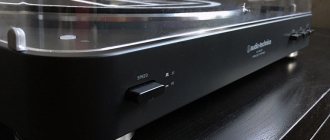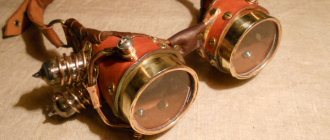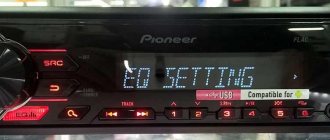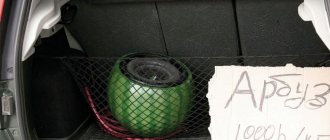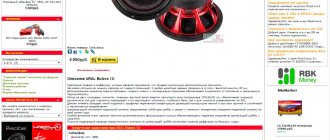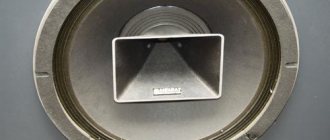Subwoofers from the American company SVS are constantly popular in the States, the brand's popularity is growing in Europe, and in our country this brand is increasingly mentioned when talking about the search for a decent subwoofer. I was brought to test the SVS SB-3000 model, announced last fall, made in a “closed box” acoustic design and equipped with a newfangled control option via Bluetooth.
For those interested, SVS was originally a very small company formed in the late 1990s in Ohio, USA. She sold her products directly via the Internet and promoted them through enthusiastic connoisseurs. However, things went so well that today it is a large company with dealers all over the world, including Russia.
I remember that the first SVS subwoofer came to me about 10 years ago, and it really was a revelation. A purely cinematic subwoofer, a very simple, inexpressive design, but how did it sound LFE tracks from DVD! And the price at that time was very attractive - in general, I almost bought it. At that time, no one knew this brand in Russia, and this was the first attempt to distribute it here. Today the situation is different: the brand has a reputation and it is more than solid.
What's inside?
The new 3000 series consists of two models. With the index PB there is a bass reflex case, and the second model of the series - SB (closed case) - arrived at the Nazarov Gallery, where the test took place. The first option is traditionally capable of providing more bass, the second is considered audiophile and “correct”. The company itself states that it has “achieved an incredible level of reproduction from a case of this size,” which further fuels interest in the model. What's inside?
The designers were not modest; they placed three SVS logos on the branded 13-inch speaker
First up is a brand new 13-inch (custom size, right?) speaker with an aluminum cone, two ferrite magnets and a voice coil with two windings wound with flat wire. Naturally, there is a special long-throw suspension, and the “long-throw” of the speaker is clearly emphasized by the curved metal grill. The grill itself is controversial in terms of aesthetics, but it can be removed. Moreover, there is no longer a bright blue LED on the front panel - nothing will distract from viewing.
The back panel is very laconic, but you will only have to use it once - everything is much more convenient to do through the application
The speaker is driven by a proprietary 800-W Sledge Class D amplifier, capable of delivering 2.5 kW at peak. All this is enclosed in a fairly compact MDF housing, and the entire system is controlled by an Analog Devices DSP processor with a frequency of 50 MHz. The device is controlled from the rear panel, where all the controls and simple indicators in the form of LEDs are located. However, the most convenient way to configure the device is through the application, which is discussed below.
The SB-3000's switching is quite simple - extremely low-level connection in both mono and stereo versions. There are also low-level outputs if you want to connect several subwoofers in a row. There is also a USB connector on the rear panel for connecting a wireless receiver, which is supplied separately. It’s a shame, but I wasn’t able to get acquainted with it: after all, people often decide that there is nowhere to put a subwoofer except behind the sofa, and no one thought of laying the wires there in advance.
A sort of “explosion circuit” of a subwoofer
The subwoofer is available in one color: black veneer (actually a high-quality veneer film) and black varnish.
Active subwoofer SVS SB-3000
The American SVS Sound initially specialized in subwoofers, and has now become a recognized expert in this field. The model we are about to test incorporates the latest advances in the creation of drivers, amplifiers and software for the correction system.
Among other acoustic systems, subwoofers have always been considered perhaps the simplest devices. A speaker with a limited range, an amplifier with an almost non-standardized level of distortion and an almost cubic-shaped body - here you have a bass machine with very good parameters. But time dictates new requirements, and companies that are able to adequately respond to them are at the forefront of progress. And SVS’s developments are interesting because they don’t so much follow trends as set them.
The custom 13-inch driver with a specially designed magnetic system is designed for long-term operation at high volume levels.
In the SB-3000 model, each design element was created almost from scratch for its specific task. The custom 13-inch driver with a specially designed magnetic system is designed for long-term operation at high volume levels. The patented SVS design uses a “motor” weighing over 13 kg with a double ferrite magnet that creates a powerful and extended field. The voice coil is divided into two sections with a gap - in order to optimally distribute mass and provide more efficient cooling. It drives a lightweight but rigid aluminum cone with a composite fiber dust cap. The shape of the cone is designed so that the piston mode with minimal distortion is maintained up to the upper operating limit of 270 Hz. A flexible parabolic suspension provides symmetrical displacement of the moving system, which also reduces distortion. As a feature of the SB-3000, it is worth noting the closed design in which the driver operates - this ensures increased bass speed, so in demand by action movie fans. However, this model also has a twin, the PB-3000, with a bass reflex design - it has different body proportions and two huge ports on the front panel. By the way, it is 60 thousand more expensive.
The electronics in our test subject are also not simple. The input signal is amplified by a specially designed Sledge STA-800D2 module capable of delivering extremely high current to the load through discrete Class D FET output stages. The output power is impressive - up to 800 W RMS (rms) and more than 2500 W. Special measures have been taken to precisely control the speaker: current feedback is introduced and a high damping factor is ensured. The lower declared reproduction limit is -3 dB – 18 Hz.
These are mere trifles compared to the capabilities the DSP provides in conjunction with the proprietary SVS control application for iOS and Android devices.
And that's not all innovation. For settings and correction of the frequency response, the SB-3000 uses a 56-bit Analog Devices Audio DSP processor with a clock frequency of 50 MHz. This allowed three main parameters (volume level, filter cutoff frequency and signal phase) to be adjusted not by turning knobs, but by using the “more - less” buttons and controlled on a scale of 12 blue LEDs.
But in fact, these are mere trifles compared to the capabilities that the DSP provides in conjunction with the proprietary SVS control application for iOS and Android devices. It has nine main sections, through which, in addition to the parameters mentioned above, you can select the Movie, Music and Custom presets, and you can register your own settings in any of them. For this, a parametric equalizer is used, in which the quality factor, center frequency and correction depth are set. The resulting frequency response will be visible on the gadget screen. A separate section is devoted to Room Gain Compensation, which includes notch filters with variable frequency and slope. With their help, it is easy to cut out the “harmful” section of the frequency response that causes standing waves in the room. The connection between the subwoofer and the control gadget is established via Bluetooth. Wired switching is quite modest - a linear input to the processor, a linear bypass LFE, and a stereo output pair on RCA. Trigger activation (3 – 12 V) and firmware update via USB service port are provided.
Room Gain Compensation is a really useful thing, it reduces humming sounds at high levels.
With such solid performance, the SB-3000 will not take up much space in the room - its dimensions are only 397 x 385 x 451 mm. The model is available in a black matte or glossy finish with a heavy metal grill.
For the test, the subwoofer was integrated into a 5.1 system with an OPPO UDP-203 source, an Emotiva MC-700 five-channel processor, an Emotiva XPA-5 GEN3 amplifier and a Magnat Cinema Ultra LCR 100-THX acoustics set. We also launched 4K movies from an external HDD with tracks in Dolby TrueHD, DTS-HD High Resolution and DTS:X.
But first I played around with the app. The process is extremely exciting: all actions are reflected on the smartphone screen and at the same time changes in sound can be heard. Room Gain Compensation is a really useful thing, it reduces humming sounds at high levels. The equalizer is also useful in music videos to emphasize the bass base, as well as for precise matching with small satellites. With such advanced settings, getting an even balance from the lowest bass to the upper limit of the speaker systems will not be a problem.
Here he demonstrated the rate of fire in the literal sense of the word - the roar of tank guns, volleys of howitzers, machine gun and machine gun fire, numerous explosions...
There is another important aspect that everyone who has ever tried to set up a 2.1, 5.1, etc. system knows about - matching the subwoofer in phase and speed. The first thing in the SB-3000 is done simply through the same application, but the fast response is achieved structurally, due to the closed low-frequency design. The SB-3000's bass is collected, with a natural attack and without extraneous sounds. We watched clips, fragments from “Fast and Furious”, “Battleship” and a couple of parts of the latest “Jurassic Park”, but the subwoofer was most clearly revealed on the soundtrack to “Fury” with Brad Pitt. Here he demonstrated the rate of fire in the literal sense of the word - the roar of tank guns, volleys of howitzers, machine gun and machine gun bursts, numerous explosions... I couldn’t even believe that such a compact bass machine could hit my ears like that. Everything sounded separately, in a completely different tonality, although practically in the same frequency range, with a minimum of conventions. After a while you forget that there is a subwoofer in the system, it fits into the system so organically. And the front acoustics - wall-mounted, quite compact - with its support, sounded modern and adult. When there are no inharmonious elements in the sound picture, the emotional impact is extremely strong. And this, in my opinion, is the main difference between the SB-3000 and most other models on the market.
SYSTEM
- OPPO UDP-203, external HDD\ Ultra HD Blu-ray drives.
- Processor Emotiva MS-700
- Amplifier Emotiva XPA-5 GEN3
- Acoustic set (front\center) Magnat Cinema Ultra LCR 100-THX, rear — OSD Black S84.
- Cables: HDMI WireWorld Radius with Active Gain
- analog WireWorld Luna
SVS SB-3000
Manufacturer: SVS Sound LLC (USA)
www.svsound.com
Acoustic design: closed body || Driver gauge: 13 inches || Frequency range (-3 dB): 18 – 270 Hz || Built-in amplifier power (RMS/peak): 800/2500 W || Phase adjustment: 0/90/180 degrees. || Line inputs: 2 x RCA || Line inputs: 2 x RCA || Finish: matte black, black lacquer || Dimensions: 397 x 385 x 451 mm || Weight: 24.7 kg || Price: 139,990 rub. (matte black) and 154,990 . (black lacquer)
share
Tags: SVSSVS SB-3000SVS Sound
Application
I decided to carry out the setup using a modern method - using an application. The SVS application cannot be called colorful and rich, but it is simple and understandable even to a user who is not particularly familiar with technical terms. The application itself detects subwoofers (works via the BLE protocol) and connects to it very quickly. When you restart the application, it automatically connects to the device.
It’s a pity that presets and subwoofers can’t be given Russian names, otherwise it’s a cool app!
There is a short help for each menu item
I won’t mention standard adjustments such as phase and volume, but I’ll tell you about the features. The most important thing is the three-band equalizer, which can be used to correct the frequency response. Interestingly, with its help it was possible to remove the resonance that caused the air conditioner cover in the listening room to rattle. It happened completely by accident - in the process of experimentation. In general, the thing is rather useful, but it is not a fact that it is in demand - the SB-3000 does not provide any auto-tuning systems.
There is also a function for compensating the gain of the room itself, where you can select the frequency and slope of the cutoff - this can also help combat room resonances or too boomy bass. The application has three options for presets, the names of which can be changed - unfortunately, Russian letters cannot be entered.
The graphics are large, the controls are clear. Setting the equalizer frequency response curve with your finger is as easy as shelling pears
What is very nice and valuable is that in the application, each item is equipped with a built-in simple and understandable help (in English) and there is a separate “training” book. The response to all changes is almost lightning fast - the application works quickly and reliably.
If several subwoofers are used in a system, they can be identified by serial numbers. In addition, they can be renamed, but the names, again, will have to be specified in Latin.
Low frequency meat
The SVS SB-3000 was connected to a system with a Denon AVR-X4500H AV receiver and DALI Oberon speakers. I left my favorite “Terminator: Genisys” for dessert, and decided to test the consistency of the manufacturer’s statements about incredible bass with my own feelings about “low-frequency meat” based on the film “Hacksaw Ridge”, where the “meaty” sound and image (pieces of meat are delicious scatter in the scene of the assault on heights) in the literal sense of the word.
The image scale of 42 inches does not reach the scale of the sound picture - it requires a large screen and a projector
Power and strength are the first impressions from watching the above scene. A room of 25 sq.m. some kind of hurricane fills - I, sitting about 2.5 meters from the subwoofer, actually had a blast on my feet! The bass from the SB-3000 literally fills the entire room, and if for less powerful devices you usually want to place two subwoofers in opposite corners of the room, then in this case one was enough. I can’t say what was chilling to the liver (I would have liked more depth), but the pressure and scale were what we needed! The 42-inch Loewe installed in this room clearly did not correspond to the scale of the sound stage - I immediately wanted a large screen and a projector.
The bass is fast enough, not boomy (although this is partly due to the treated room), and large-scale. It's big and cool, but compared to other level subwoofers, it's not as structured and elegant (however, other manufacturers want more money). Although SVS hints that we are kings in cinema and experts in music, I believe that a proper audiophile subwoofer must have a high-level input - the SB-3000 does not have it, nor does it have a balanced connection. But these are lyrics on the hackneyed topic of “why pay twice as much” - there is a reason, it all depends on the tasks. If the task is to build a powerful, spectacular cinema, then SVS, of course, comes out on top. But looking for nuances and talking about high matters in a mid-level cultural center doesn’t make much sense.
I switched to the well-known “Terminator” and didn’t even notice how I enjoyed watching not only the episode with the race on the bridge, but also a little further - everything was in place, everything was as it should be. I repeat: impressive and with good dynamics. This is exactly what you expect when watching a modern action movie - to enjoy the effects and scale of the action taking place on the screen.
Review. SVS SB-1000. Why a subwoofer in an audio system?
When I received an offer to test a subwoofer in my system, I was quite puzzled. Like probably most audiophiles, I am suspicious of subwoofers, although I understand that the specific implementation decides everything. But it is still not easy to overcome all kinds of prejudices. And yet, I took this test as a kind of challenge. Is there a place in my system for a subwoofer?
From my system's point of view, two main points prevented the successful use of the sub. The first thing that confused me was why, having speakers with 12-inch bass drivers, why use a subwoofer in the system? And the second point: how to connect all this? But first things first.
As for the first point, the theoretical one, according to common sense, such things came to mind. If we abstract from my own system and speak in general, then in a high-level setup a subwoofer may be required for the following reasons:
- It's no secret that our listening rooms are not perfect and not all are treated accordingly. Therefore, correct bass reproduction is one of the main problems of integrating existing acoustic systems into a room. From this point of view, a subwoofer seems like a reasonable solution because it allows greater control over the location of the bass section. In other words, there is often a case where we have a pair of excellent speakers that are placed in such a way that they reproduce music in the best possible way, and at the same time such placement is not ideal from the point of view of the bass (exciting the corresponding room resonances). In this case, the subwoofer allows you to “cut off” the bass component of the speaker above a certain threshold, and freely place lower bass in another place, the freedom of choice of which is incomparably wider than in the case of the main pair of speakers.
- The same bass level. This is a kind of loudness compensation that most modern high-quality amplifiers lack. I think I won’t surprise anyone if I say that even in a well-built system there are often recordings where there is either too much bass or too little. The subwoofer here allows you to quickly “tweak” the bass knob in the desired direction.
- Listening late at night. Most of us who don't own our own detached houses have to put up with the fact that after a certain hour the volume knob has to be turned counterclockwise, sometimes noticeably below the desired level. And the main problem that bothers neighbors here is primarily the all-pervasive bass. A compromise option looks attractive when you reduce the volume not so much, but you can “clean up” the bass even more.
All of the above hints to us that a subwoofer, if not mandatory, then has a right to life. It remains to come up with something regarding practical implementation. So, the subwoofer being tested is called SVS SB-1000 (as I understand it, SB means sealed box - closed box, because there is also a PB - ported box model) and is a regular “cube” with rounded side edges and equipped with a 12-inch speaker with a closed design and, of course, a built-in amplifier.
A quick look at the Quick Connect Guide quickly showed me that there was no quick fix. All the proposed schemes only concerned the moment when it was necessary to additionally mix the signal from the subwoofer to the main signal, which is only suitable in the case of a home theater or a system with small bookshelf speakers that are not capable of delivering anything serious below a certain limit. Having Spendor SP100R speakers in the system, I needed anything but additional mixing of the bass component from the subwoofer. And then I had to read the full instructions more carefully, where in small print in the margins (just kidding) the very option was described, the theoretical basis for which I provided above. Namely: the tested SVS SB-1000 subwoofer has a stereo input and a stereo output. A signal from the preamplifier (adjustable volume) is supplied to the stereo input, then the signal is cut off at 80 Hz, and then the signal goes through the stereo output to the power amplifier and then to the main speaker systems. In this case, the volume knob, of course, regulates not only the signal for the power amplifier, but also the signal for the subwoofer, allowing it to perform in tandem with the main system. All that is required is a separate preamplifier and power amplifier. Fortunately, at the time of the test I had such equipment. So, in the test system, the signal source was the Sonore microRendu streamer, then the signal via USB was sent to the Ayre Codex combiner, which served as both a DAC and a preamplifier, from its output the signal went to the subwoofer, and then to the Fezz Audio Mira Ceti amplifier, which, among other things, , can be used as a power amplifier. Thus, my Spendor SP100R speakers were powered by a single-ended tube signal cut off at 80 Hz, and the bass support was provided by a subwoofer.
The basis for success here is first and foremost careful installation and configuration. The instructions contain a number of tips, but here, as usual, you need to listen and experiment. The three keys to proper operation are placement, phase, and high cutoff frequency. If everything is done correctly, and patience is needed here, then the subwoofer can very seamlessly “fit” into the sound of the main speakers. In this case, a complete illusion is created that this box near the side wall of the room does not participate in the formation of sound - the bass does not come from there, but as if from the side of the speakers.
After setting it up, I started experimenting with the bass level and I can say that, despite initial skepticism, the results turned out to be very interesting. Well, first of all, yes, adjusting the bass level on some recordings allows you to get a subjectively different impression of the main range. I have quite large speakers quite well integrated into a standard-sized living room (18 sq.m.), but there are plenty of recordings where I would like less bass, and here the sub allowed me, by reducing the level of this very bass, to get a subjectively lighter, more intelligible midrange , the sound became more relaxed, the top was freer. And when listening at night, you feel more psychologically confident - you simply turn down the bass to the “intuitively felt” level - in any case, the neighbors will not have a reason to complain, while the volume remains quite decent.
The bass itself turned out to be of surprisingly good quality - no “blooming” or booming, rather, it was quite tight, collected and at the same time went “into the depths”. And the intelligibility of notes in pitch was very good. Although in fact, this is what the bass from a small closed box should be like.
In general, I am pleased with the result of the experiment. It was a very rewarding experience. To the skeptics, I’ll tell you right away: no, this modest little sub did not “overcome” my Spendors when they played at full strength, receiving a full-range signal from a 300V single-ended tube. And there was no such task in this case. But a noticeable percentage of the recordings were at least somewhat more interesting, original and fresh in their own way. Well, if you can’t fit good speakers into a difficult room, I recommend that you try this option, it’s quite possible that there is salvation here.

